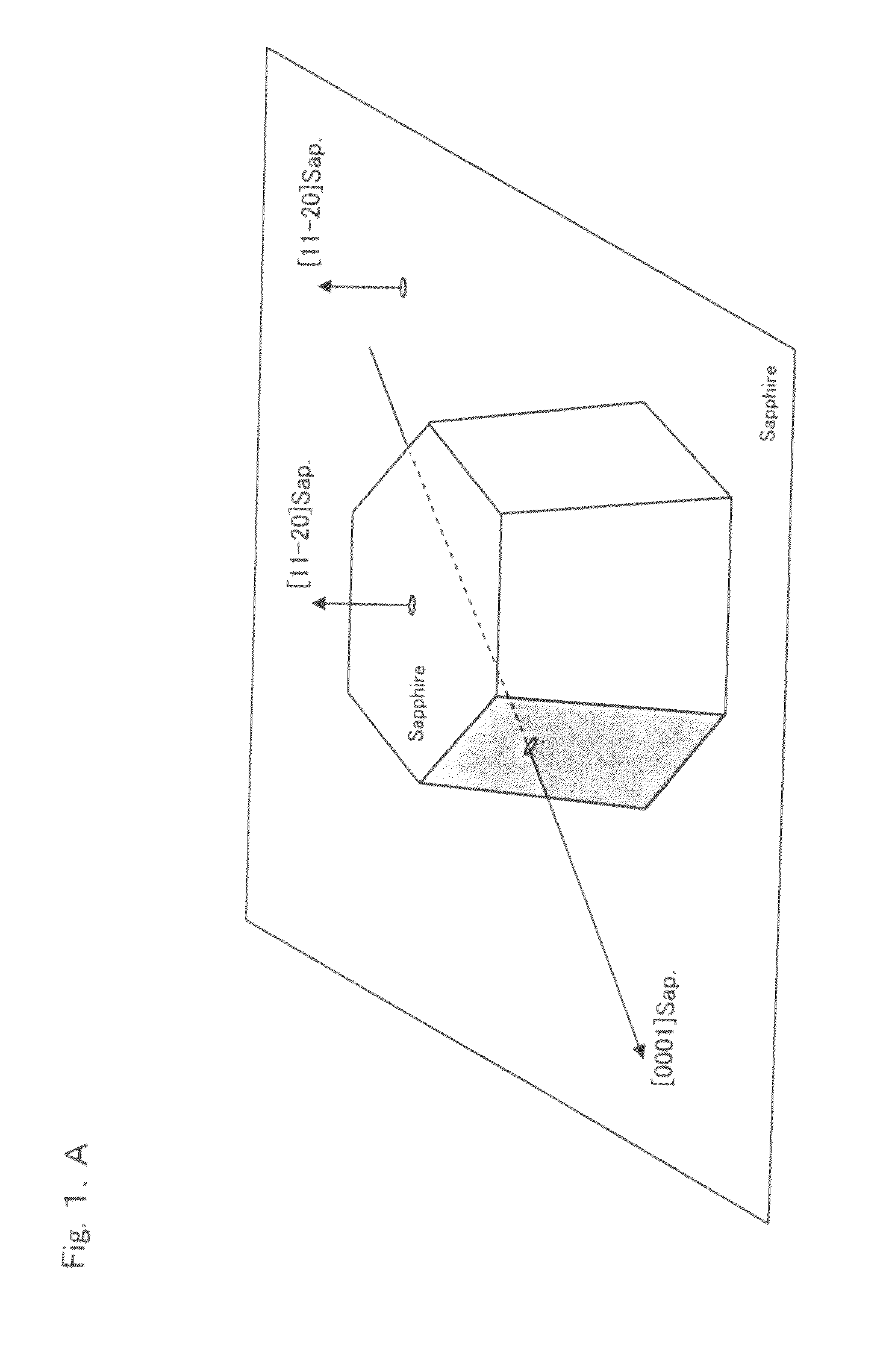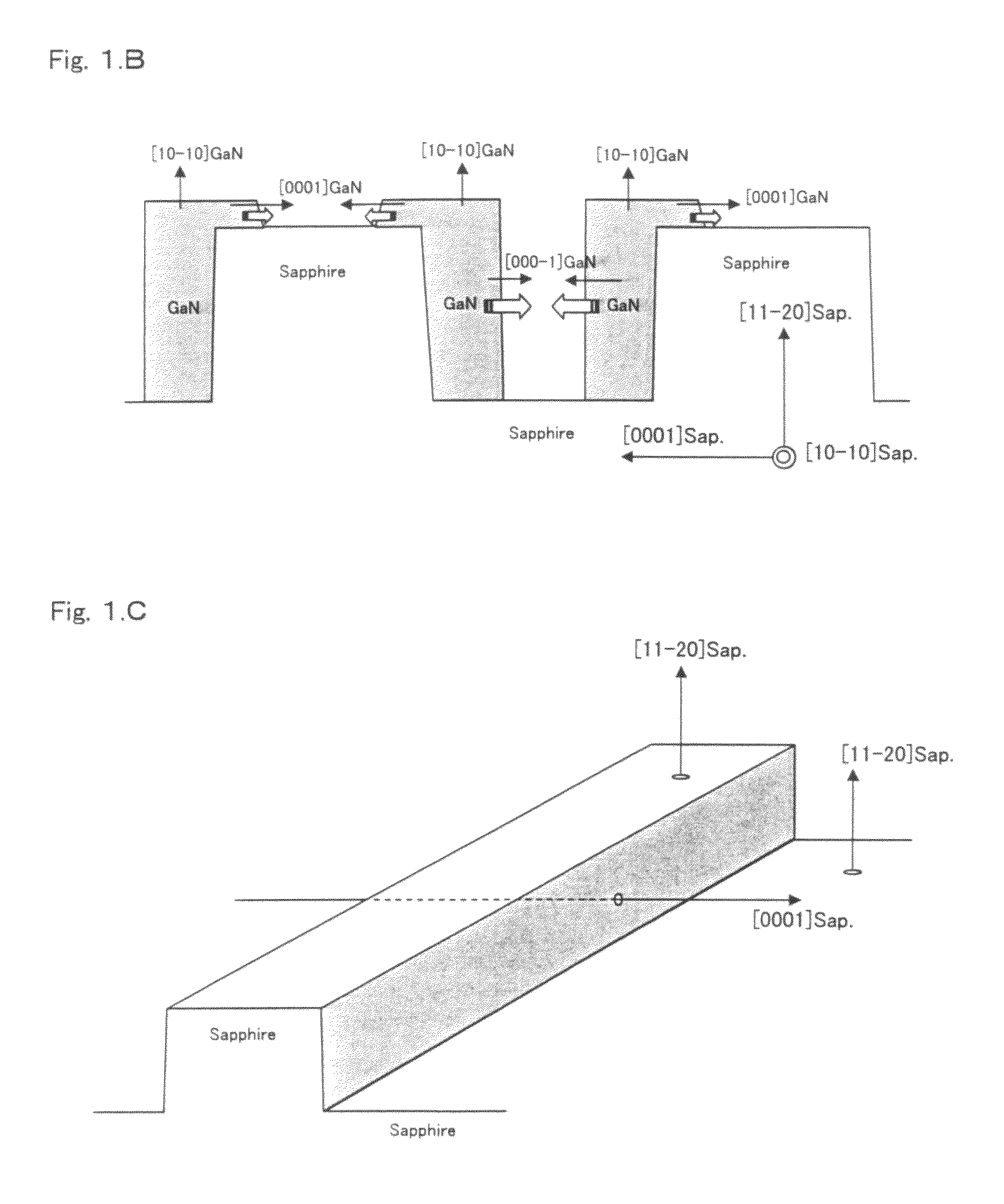Method for producing group III nitride-based compound semiconductor, wafer including group III nitride-based compound semiconductor, and group III nitrided-based compound semiconductor device
a technology of nitride and compound semiconductor, which is applied in the direction of crystal growth process, polycrystalline material growth, chemically reactive gas growth, etc., can solve the problem of undesirable piezoelectric field generation attributed to internal strain
- Summary
- Abstract
- Description
- Claims
- Application Information
AI Technical Summary
Benefits of technology
Problems solved by technology
Method used
Image
Examples
embodiment 1
[0056]FIG. 2 schematically shows a specific embodiment of the method for producing a Group III nitride-based compound semiconductor of the present invention, which shows the temperature of a substrate, and supply / non-supply of raw materials or a carrier gas (hydrogen). Step numbers are given at the bottom of FIG. 2.
[0057]In step 1, in a hydrogen atmosphere, a sapphire substrate is heated to 1,160° C. and then cooled to 300 to 420° C.
[0058]In step 2, while the substrate is maintained at 300 to 420° C., trimethylaluminum is introduced under supply of a carrier gas (nitrogen-hydrogen mixture).
[0059]In step 3, introduction of trimethylaluminum is stopped, and the temperature of the substrate is elevated to 1,010° C. under supply of a carrier gas (nitrogen-hydrogen mixture) and ammonia.
[0060]In step 4, epitaxial growth is carried out through introduction of trimethylgallium under supply of a carrier gas (nitrogen-hydrogen mixture) and ammonia.
[0061]In step 5, the temperature of the subst...
embodiment 2
[0080]In Embodiment 2, the surface of a sapphire substrate was thermally treated without supply of trimethylaluminum; i.e., step 2 shown in FIG. 2 was omitted. That is, the surface of the sapphire substrate was thermally treated in a hydrogen atmosphere. Step 3 (nitridation) was initiated at 300 to 420° C. As a result, a relatively favorable Group III nitride-based compound semiconductor having an m-plane main surface was produced.
[0081]Even when, in step 1, cooling of the sapphire substrate was initiated at the moment when the substrate temperature reached 1,160° C. (i.e., the period during which the temperature of the sapphire substrate was maintained at 1,160° C. was zero), similar to the aforementioned case, a relatively favorable Group III nitride-based compound semiconductor having an m-plane main surface was produced.
embodiment 3
[0082]As described below, stripe-form mesas were formed on a sapphire substrate having an m-plane main surface. Specifically, the stripe-form mesas were formed so that the longitudinal direction thereof was inclined by 45° from the c-axis toward the a-axis in the main surface.
[0083]The stripe-form mesas were formed by use of an etching mask so that the width of each mesa (i.e., unetched portion) was 2 μm, and the distance between adjacent mesas (i.e., the width of an etched portion) was 3 μm. The etching depth was regulated to 0.7 μm. The angle between the m-plane main surface and side surfaces of each stripe-form mesa was about 70°.
[0084]The m-plane sapphire substrate having the thus-formed mesas was treated in a manner similar to that described above in Embodiment 1, and then gallium nitride (Group III nitride-based compound semiconductor) was epitaxially grown, which is schematically shown in FIG. 6.
[0085]As shown in FIG. 6, a hexagonal columnar Group III nitride-based compound s...
PUM
| Property | Measurement | Unit |
|---|---|---|
| temperature | aaaaa | aaaaa |
| off-angle | aaaaa | aaaaa |
| temperature | aaaaa | aaaaa |
Abstract
Description
Claims
Application Information
 Login to View More
Login to View More - R&D
- Intellectual Property
- Life Sciences
- Materials
- Tech Scout
- Unparalleled Data Quality
- Higher Quality Content
- 60% Fewer Hallucinations
Browse by: Latest US Patents, China's latest patents, Technical Efficacy Thesaurus, Application Domain, Technology Topic, Popular Technical Reports.
© 2025 PatSnap. All rights reserved.Legal|Privacy policy|Modern Slavery Act Transparency Statement|Sitemap|About US| Contact US: help@patsnap.com



